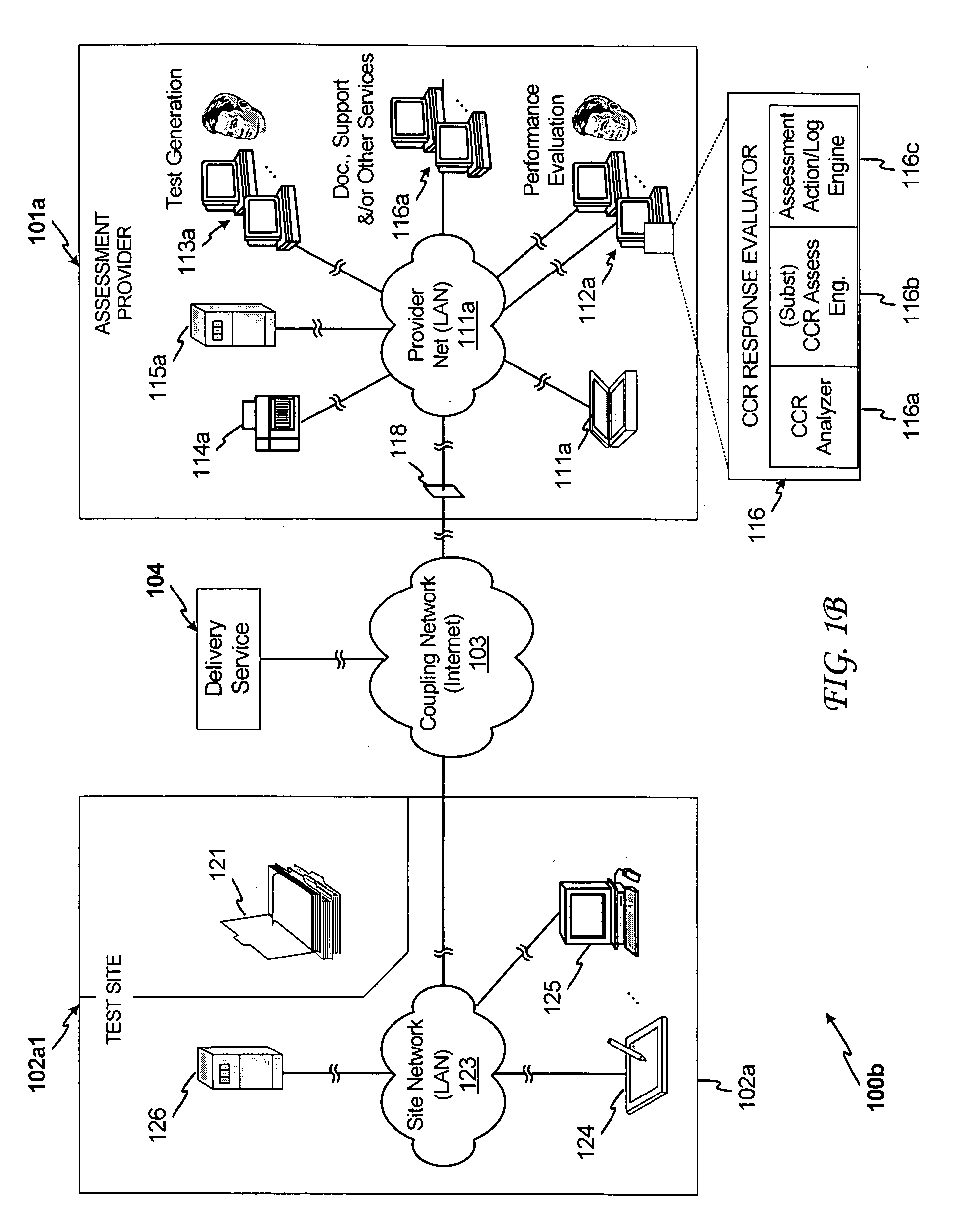System and method for automated assessment of constrained constructed responses
a technology of automated assessment and constructed responses, applied in the field of education, can solve the problems of limited scope of above mechanism, excessive time-consuming and laborious, and difficult to complete collection and grading process, etc., and achieve the effect of reducing labor intensity, reducing labor intensity, and reducing labor intensity
- Summary
- Abstract
- Description
- Claims
- Application Information
AI Technical Summary
Benefits of technology
Problems solved by technology
Method used
Image
Examples
Embodiment Construction
[0012] Embodiments of the present invention provide systems and methods for conducting paper-based or electronic assessment of graphic, matching, markup, short answer and / or other constrained constructed response CCR item responses, thereby enabling problems of conventional mechanisms to be avoided and / or further advantages to be achieved. Such assessment may, for example be conducted in conjunction with one or more of formative, summative or other testing, educational or other gaming, homework, assessable business or other life occurrences, other interactions, and so on. The assessment may also include one or more of a achievement and / or performance assessment (e.g., scored with numeric or performance level descriptor, which is hereafter referred to as performance assessment), a learning assessment (e.g., diagnosis, knowledge, understanding, further materials / training, discussion, and so on) or other assessments that may be desirable. One or more of such assessments may further ass...
PUM
 Login to View More
Login to View More Abstract
Description
Claims
Application Information
 Login to View More
Login to View More - R&D
- Intellectual Property
- Life Sciences
- Materials
- Tech Scout
- Unparalleled Data Quality
- Higher Quality Content
- 60% Fewer Hallucinations
Browse by: Latest US Patents, China's latest patents, Technical Efficacy Thesaurus, Application Domain, Technology Topic, Popular Technical Reports.
© 2025 PatSnap. All rights reserved.Legal|Privacy policy|Modern Slavery Act Transparency Statement|Sitemap|About US| Contact US: help@patsnap.com



